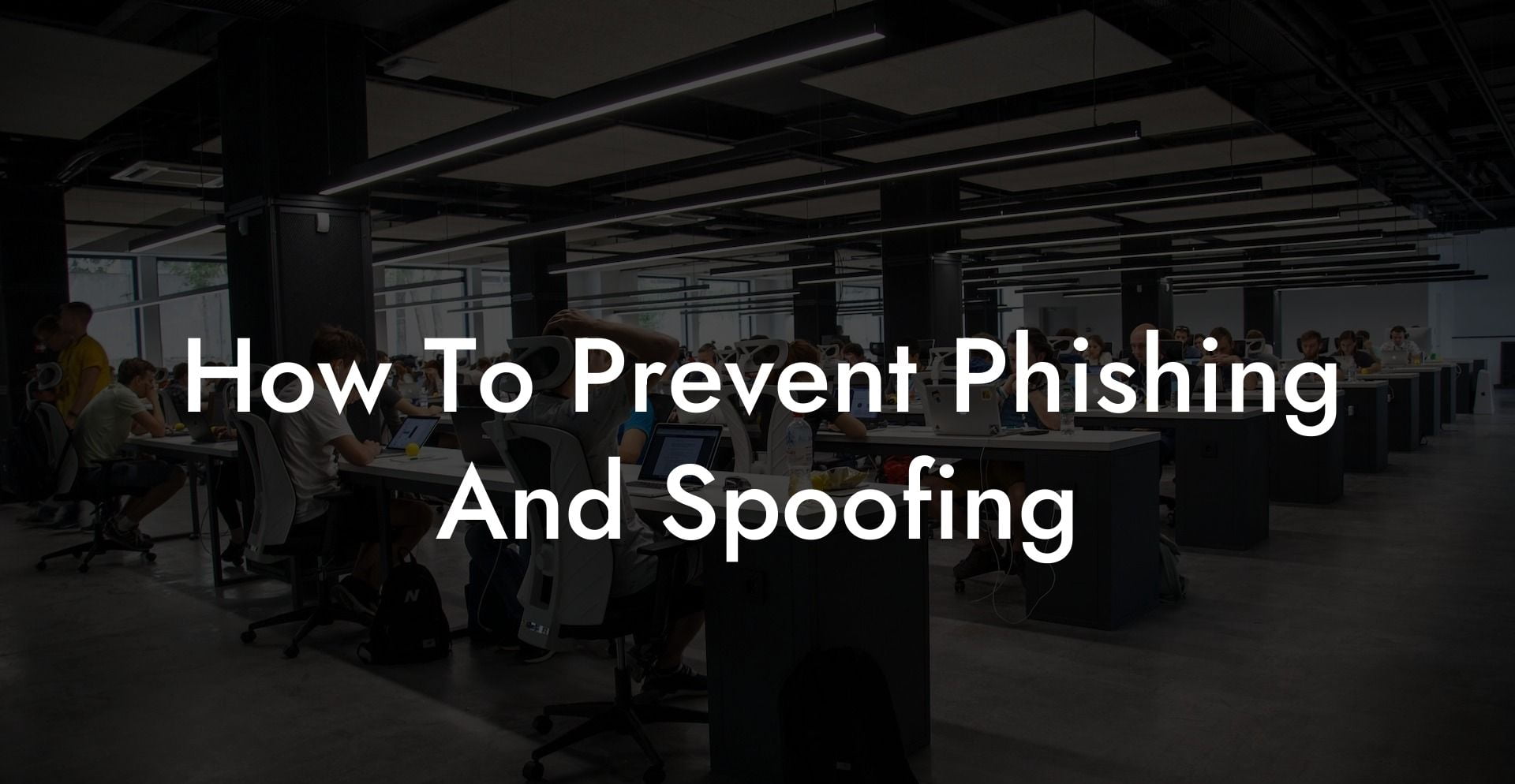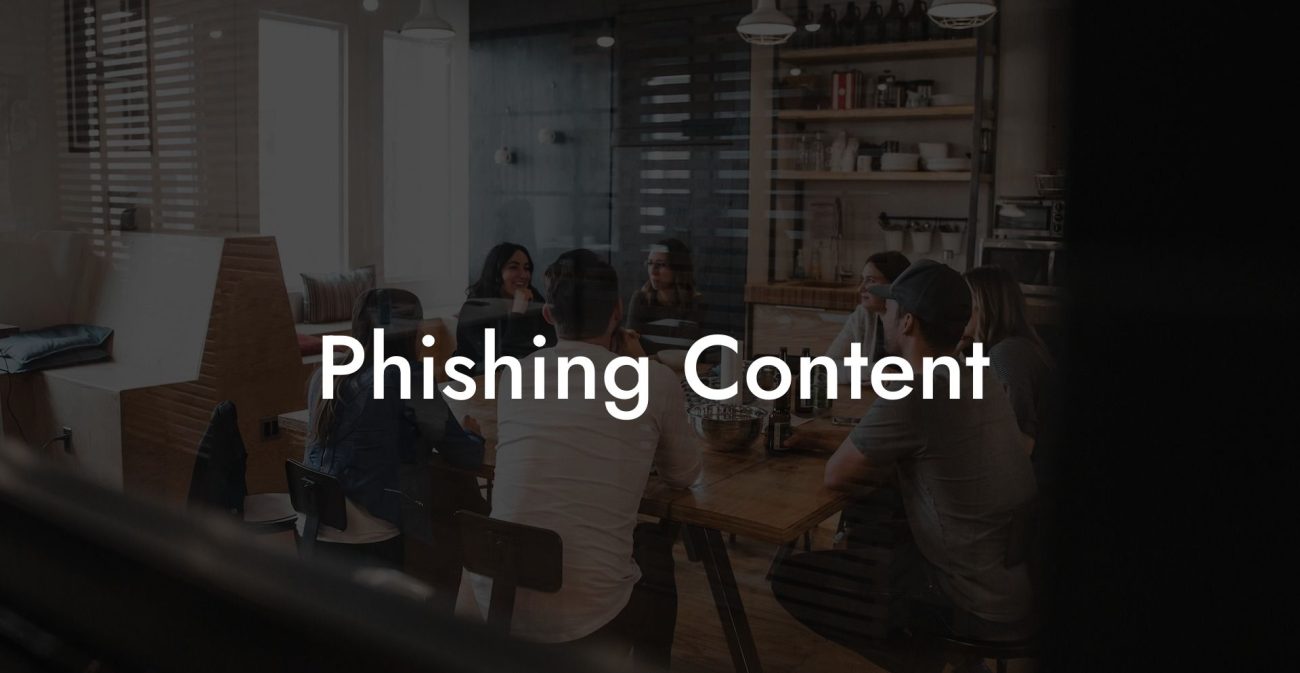In today's digital age, our personal information has become more vulnerable than ever. Cybercriminals are continually devising new and sophisticated tactics to steal sensitive data from unsuspecting individuals. Two of the most common methods used by hackers to obtain your personal information are phishing and spoofing. With the proper knowledge and precautions, you can protect yourself from these malicious activities and ensure your online safety. In this blog post, we will explore the nature of phishing and spoofing attacks, and provide you with practical tips and examples to help you stay one step ahead of cybercriminals.
How To Prevent Phishing And Spoofing Table of Contents
Here are some tips on how to prevent and protect yourself from phishing and spoofing attacks:
Phishing is a type of cyberattack where criminals attempt to trick you into revealing sensitive information, such as usernames, passwords, and credit card details, by impersonating a trusted entity. Typically executed through email or instant messaging, phishing attacks often direct victims to fake websites designed to look like legitimate services.
Protect Your Data Today With a Secure Password Manager. Our Top Password Managers:
Spoofing, on the other hand, involves disguising an email's sender information to make it appear as though it was sent from a trusted source. This deception is usually done to gain your trust, so you are more likely to reveal personal information or open malware-infected attachments. It's important to recognize that both phishing and spoofing attacks are designed to exploit human psychology, so being vigilant and questioning suspicious communications is crucial.
Here are some tips on how to prevent and protect yourself from phishing and spoofing attacks:
1. Verify the sender's email address
Always check the sender's email address for any irregularities or signs of spoofing. Trusted organizations will typically use official email addresses, so be wary of generic or free email service providers. If you're unsure about the legitimacy of an email, consider contacting the supposed sender directly through their official channels to verify its authenticity.
2. Beware of urgent or threatening language
Phishing emails often use a sense of urgency or threats of negative consequences to pressure you into taking immediate action. If an unsolicited email compels you to click on a link, provide personal information or download an attachment, take a step back and consider if the request is legitimate.
3. Verify links and websites
Hover your mouse over any links within an email without clicking on it to reveal the actual URL. If the URL appears suspicious, don't click on it. When visiting websites, ensure the web address begins with "https://" and look for a padlock symbol in the address bar – both indicate that the site is secure.
4. Set up two-factor authentication (2FA)
2FA provides an added layer of security, requiring you to verify your identity by entering a unique code sent to your mobile device when logging into an online service. This can prevent unauthorized access to your accounts, even if your username and password are compromised.
5. Update your software
Keep your operating system, antivirus software, and applications up to date with the latest security patches. These updates help protect against known vulnerabilities and security threats.
How To Prevent Phishing And Spoofing Example
Sophia receives an email from what appears to be her bank, citing that her account has been compromised and urging her to click a link and verify her information. Instead of following the email's instructions, Sophia examines the sender's email address and notices that it uses a generic email provider rather than her bank's official domain. Realizing this discrepancy, she disregards the email and contacts her bank directly to inquire about the situation. By staying vigilant and investigating the legitimacy of the email, Sophia averts a potential phishing scam and protects her personal information.
Arming yourself with knowledge about phishing and spoofing tactics is critical to staying safe in our increasingly digital world. Remember to trust your instincts and think before acting when faced with suspicious emails or requests for personal information. By following the tips outlined in this guide, you'll be well-equipped to safeguard your sensitive data from cybercriminals. Be sure to share this post with friends and family to help protect those you care about, and explore other guides on Voice Phishing for more cybersecurity tips and advice.
Protect Your Data Today With a Secure Password Manager. Our Top Password Managers:















